Kid-Friendly World Transit Guides
- Trevor Lawrence
- Jun 23
- 30 min read
Parents, these kid-friendly mass transit and metro guides represent our answer to the question: How will we navigate the quirks of public mass transit with small children? We've ridden the rides and we're here with the guides. More added as frequently as we can!
NOTICE for Americans: Why You Have to Validate Tickets in Europe (And Why It Feels Weird)

In cities like Rome, Paris, Prague, Vienna, Lisbon, Porto, Berlin, Kraków and many more, public transport relies on a validation system rather than turnstiles or staffed checkpoints. Here's how it works:
You buy a ticket, then you must validate it before or upon boarding by stamping it in a small machine (usually yellow or orange). Same goes for the digital version. There's often a prompt in the official ticketing app that shows you the process. Some cities offer QR codes on the tram, bus, metro you're riding. You can scan it to validate as well.
This starts the timer on time-based passes (like Rome’s 100-minute BIT ticket).
If you don’t validate it and get caught by an inspector (they board randomly), you can be fined—even if you have a valid ticket. And believe me, the fines are typically not cheap.
Why it’s strange for Americans: In the U.S., public transport typically uses gated entrances (like New York’s MTA or D.C.’s Metro) that check fares automatically. Americans aren’t used to the “honor system + random enforcement” approach common across Europe.
Lastly, when traveling Europe you start to take it for granted that everyone speaks a little English. Cue the record scratch. Ticket inspectors rarely do, so forget about trying to argue, beg for forgiveness, or plead ignorance. They've heard it so often, you may just get summarily booted from the bus.
Kid-Friendly Public Transit Guide Index*
*Adding more as soon as we can document our transit travel results with kid(s).
Jump To:
Azores Transit Guide: Rock-Hopping the Atlantic Ocean

The Azores archipelago's nine volcanic islands are mostly reached by plane due to distance. Getting around requires a little extra planning—but it's isolated, lush volcanic beauty at every turn.
Special Considerations for Parents
Strollers: Manageable in towns but tricky on cobbled streets and hiking areas.
Baby Wearing: Highly recommended for trails and uneven surfaces.
Car Seats: Required in rental cars. Limited availability for car seat rentals, but they do exist. Check availability with providers in advance. Make sure your car seat can be secured with seat belts.
Ferry Travel: Bring snacks, layers, and motion sickness supplies—waters can be choppy.
Inter-Island Travel Options
Mode | Routes Covered | Notes |
SATA Air Açores | All islands (daily or near-daily flights) | Fastest and most reliable option. Discounted inter-island fares for residents in case you wanna, you know, move there. |
Atlanticoline Ferries | Major islands (especially Faial, Pico, São Jorge) | Seasonal frequency. Slower but scenic and affordable. Limited winter service. |
Private Boat Charters | Faial–Pico–São Jorge, or custom routes | Flexible and scenic, but expensive. Great for groups. |
Typical One-Way Prices (2025)
Route | By Air (EUR/USD) | By Ferry (EUR/USD) | Time (Approx.) |
São Miguel → Terceira | €60–€90 / $65–$97 | N/A | ~45 minutes (flight) |
Faial → Pico | €45 / $49 | €5–€6 / $5.40–$6.50 | ~10–20 min (ferry) |
São Jorge → Faial or Pico | €50–€80 / $54–$86 | €10–€12 / $11–$13 | ~1–1.5 hours (ferry) |
Terceira → Graciosa | €50–€70 / $54–$76 | Limited ferry | ~35 minutes (flight) |
Getting Around on São Miguel (Most Popular Island)
Check out our lovely 4-day itinerary. We cannot wait to return.
Mode | Coverage | Notes |
Taxis | Island-wide | Can be expensive for long distances. Confirm fare in advance. |
Ride-hailing | Rare or unavailable | Not reliable outside Ponta Delgada. |
Rental Cars | Highly recommended | Best way to explore the island on your schedule. |
Buses (EVA/Atlântico) | Major towns and routes | Limited weekend service. Timetables vary. Use official site: https://www.redeatlantico.pt |
Getting Around on Pico, Faial, and Terceira
Car Rental: Ideal for Pico, São Miguel, São Jorge and Faial—roads are simple and scenic. Sometimes a bit narrow off the main island through-routes, but mostly great.
Buses: Limited and mostly school/day routes. Terceira has slightly better service.
Taxis: Available but should be arranged in advance.
Ferries: Use between the central triangle islands (Pico, Faial, São Jorge).
Useful Maps & Apps
Rome2Rio: Great for seeing options between islands: https://www.rome2rio.com
Atlanticoline Ferry Info: https://www.atlanticoline.pt
SATA Flights: https://www.azoresairlines.pt
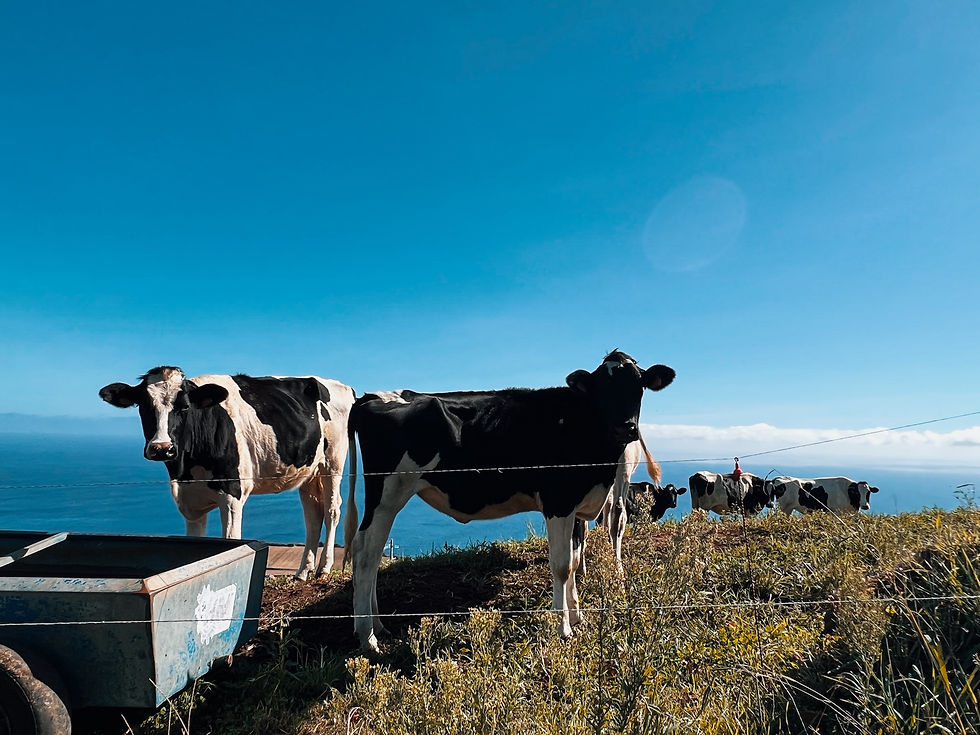
WS&T Family Tip: If you're island-hopping with kids, stick to the central triangle (Faial, Pico, São Jorge) for easier logistics and shorter travel distances. São Miguel, one of our favorites, is a trip unto itself. But that doesn't mean you can't touch them all.
Renting a car can be a bit pricey, but is considerably easier (and probably cheaper on the whole) than coordinating bus and taxi routes—especially with little ones in tow.
This guide should help you embrace the isolated beauty of the Azores without getting lost between ports or bus stops. Watch for (and wave at) the handsomest cows I've ever seen.
While subject to change due to construction, schedule and route issues, we do our best to keep the Azores transit guide (with kids) up to date. Let us know if you see something that needs revision, or notice any glaring issues with our memory of the system.
Our Favorite Gear for the Azores? Check out curated picks to make life easier when traveling with children.
Visit PACKING For More Outstanding Travel Essentials
Balkans Transit Guide: From Adriatic Views to Mountain Crossings

Exploring the Balkans by public transport is a serious trek, but one that you will not soon forget. The region's geography and "diverse" infrastructure mean you’ll find everything from sleek ferries to dusty bus rides—all part of the adventure.
Special Considerations for Parents
Strollers: Many buses have undercarriage storage, but city streets can be rugged.
Baby Wearing: Helpful in historic towns with narrow alleys and cobbled paths.
Car Seats: Bring your own for rental cars; rarely provided or required by law.
Long Rides: Bring snacks, water, and entertainment—facilities are limited on older buses.
Key Countries Covered
Croatia
Montenegro
Albania
Bosnia & Herzegovina
North Macedonia
Serbia
Intercity Transit Options
Mode | Countries/Common Routes | Notes |
Buses | All countries | Most common and reliable option. Book through local stations or FlixBus. |
Trains | Serbia, North Macedonia, Bosnia, parts of Croatia | Sparse routes; scenic but slower and sometimes poorly maintained. |
Ferries | Croatia, Montenegro | Great along the Adriatic coast. Jadrolinija is Croatia’s main operator. |
Car Rental | All countries | Offers flexibility but be aware of border rules and vignette systems. |
Adriatic Coast Travel (Croatia & Montenegro)
Ferries: Coastal towns and islands are linked by ferry (Split, Dubrovnik, Hvar, Kotor). In summer, lines are frequent and scenic.
Buses: Inexpensive and plentiful. Try Dubrovnik–Kotor (~€20 / ~$22). Book early in summer.
No rail service exists between Dubrovnik and Montenegro.
Sample Transit Prices (2025)
Route | Mode | EUR Price | USD Price (approx.) | Time |
Split → Dubrovnik | Bus | €18–€25 | $19–$27 | ~4.5 hr |
Dubrovnik → Kotor | Bus | €20 | ~$22 | ~2 hr |
Tirana → Skopje | Bus | €25–€30 | ~$27–$32 | ~8 hr |
Belgrade → Sarajevo | Bus/Train | €25–€35 | ~$27–$38 | ~6–8 hr |
Zagreb → Split | Train | €20–€30 | ~$22–$32 | ~6 hr |
Ticketing & Tips
Bus tickets are often bought at stations. Online booking is available via:
Trains require in-person purchase in many countries.
Ferries: https://www.jadrolinija.hr for Croatian routes.
Useful Apps & Maps
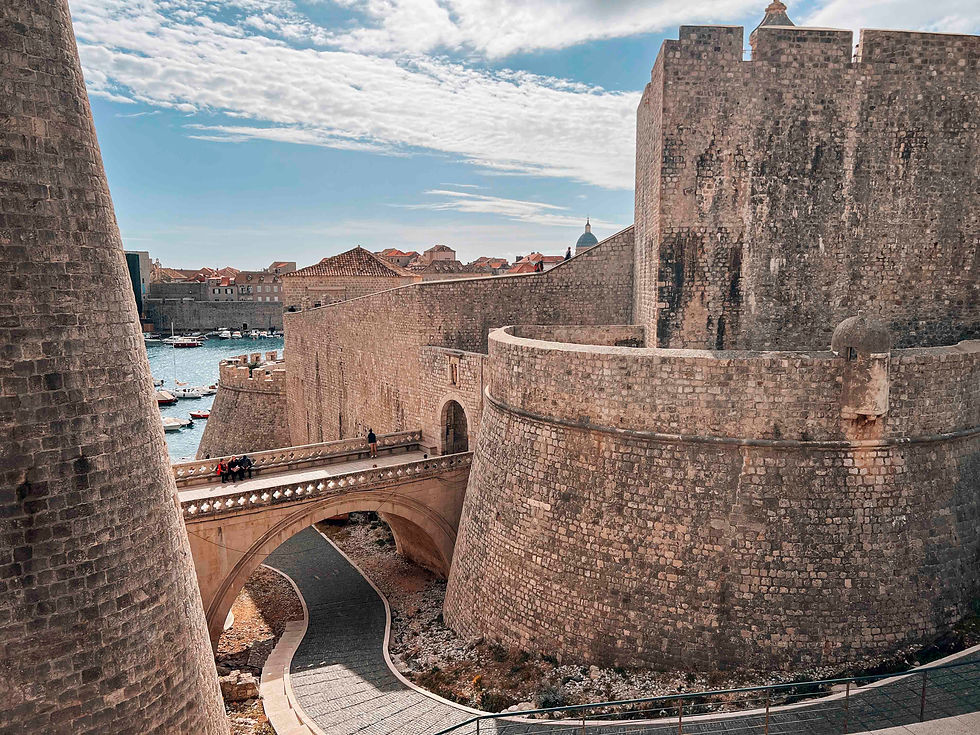
Travel Like a Local
Locals rely on buses, so tickets can sell out—reserve ahead in high season.
Border crossings may involve delays; always carry passports and confirm visa rules.
Ferry routes may change with weather—double-check before departing for ports.
Bus stations range from huge and official to a random parking lot in the middle of nowhere. You just sort of have to feel it out and/or get a sense of the route via internet forums. Don't be afraid to ask people. If you speak the name of your destination and look perplexed, they'll usually point you in the right direction.
WS&T Family Tip: We recommend combining coastal bus travel with a ferry or two for a kid-friendly mix of transport. The ferry from Split to Hvar or Dubrovnik to Kotor offers both ocean breezes and fewer motion complaints than winding mountain roads. Be sure to schedule around the infamous "bora", a wind off the Adriatic that abruptly cancels ferries.
While subject to change due to construction, schedule and route issues, we do our best to keep the Balkan transit guide (with kids) up to date. Let us know if you see something that needs revision, or notice any glaring issues with our memory of the regional system.
Our Favorite Gear for the Balkans? Check out curated picks to make life easier when traveling with children.
Visit PACKING For More Outstanding Travel Essentials
Buenos Aires Transit Guide: Getting Around Argentina’s Capital

Buenos Aires is a sprawling city. Get to know the Subte (Metro). It's pretty efficient! We've even included a bit of info about the short ferry ride to Colonia, Paraguay, you know, so you can count it on your country tally.
Special Considerations for Parents
Strollers: Subte has elevators in major stations but many are nonfunctional; buses can be tight.
Baby Wearing: Easier on Subte and in crowded streets/markets.
Car Seats: Rare in taxis; bring your own if needed. Be sure to bring a car seat that can be secured with seat belts.
Safety: Avoid flashing valuables when boarding crowded transport.
Public Transit Overview
Mode | What It Covers | Notes |
Subte (Metro) | 6 lines (A–E and H) covering central and outlying areas | Fast and affordable, especially useful for commuting hours. |
Colectivos (Buses) | Over 180 lines across the city | Extensive coverage; color-coded buses run 24/7 on main routes. |
Trains | Suburban connections and farther city outskirts | Useful for day trips or budget regional travel. |
Taxis | Citywide; can be hailed on street or called | Must be clearly marked. Fares are metered and inexpensive. |
Ride-Hailing | Uber, Cabify, DiDi | Uber is cheaper but technically not legal (still widely used). |
Biking | EcoBici public bike program | Free for short rides. Dedicated bike lanes in key areas. |
Ticketing & Fares (2025)
Ticket Type | ARS Price (approx.) | USD Price (approx.) | Notes |
Subte Single Ride | ARS 125 | ~$0.80 | Requires SUBE card |
Bus Ride (Colectivo) | ARS 75–125 | ~$0.50–$0.80 | Fare depends on distance |
Train Ride | ARS 100–160 | ~$0.65–$1.00 | For travel to outer districts |
SUBE Card | ARS 730 | ~$4.80 | Required for all public transit (one card per group is fine) |
How to Get a SUBE Card
Purchase at kioskos (convenience shops), Subte stations, or train terminals.
Can be recharged at stations or with the "Carga SUBE" app.
Ticket Activation & Use
Tap your SUBE card at turnstiles in Subte or upon boarding buses.
One card can be used for multiple passengers—just tap once per person.
Getting from Ezeiza Airport (EZE) to the City
It's not cheap thanks to the pretty big distance between airport and city center, but taxi and ride-hailing are the way to go, esp when traveling with kids. If you're traveling a bit lighter and want to save some cash, Tienda León is very easy to grab.
Method | Price (ARS/USD) | Time | Notes |
Taxi (official) | ARS 10,000–13,000 / ~$65–$85 | 45–60 min | Use airport taxi stand or book via Taxi Ezeiza. |
Ride-Hailing | ARS 6,000–9,000 / ~$40–$60 | 45–60 min | Uber operates despite legal grey zone. |
Shuttle (Tienda León) | ARS 3,000 / ~$20 | ~1 hour | Shared van to main terminals (Retiro, Puerto Madero). |
Public Bus | Not recommended | 1.5–2 hours | Complicated with luggage; not direct. |
Useful Apps & Maps
Travel Like a Local
Rush hours (8–10 AM and 5–7 PM) are very crowded—travel off-peak when possible.
Keep coins or small bills handy when topping up SUBE at kiosks.
EcoBici is free, but you need to register online or via app: https://ecobici.buenosaires.gob.ar
Ferry to Colonia del Sacramento (Uruguay)
Almost forgot. Just across the Río de la Plata, Colonia makes for a perfect day trip. This charming UNESCO-listed town offers cobbled streets, colonial buildings, and a relaxed pace—ideal for families or anyone needing a breather from the bustle of Buenos Aires.
Ferry Operator | Duration | Price (USD approx.) | Notes |
Buquebus | ~1 hr | ~$65–$90 roundtrip | Most luxurious option with onboard services |
Colonia Express | ~1 hr 15m | ~$50–$70 roundtrip | Cheaper, slightly less frequent |
Seacat | ~1 hr | ~$55–$75 roundtrip | Often codeshares with Buquebus |

Passport required for international travel.
Ferries leave from Puerto Madero terminal—easily reached by taxi or Subte (Line B).
Tickets can be booked online. Book early for weekends or holidays.
WS&T Family Tip: Consider Tienda León shuttles or arranging a private transfer from the airport if traveling with young children and lots of gear. Once in the city, the Subte is a fast friend—as long as you avoid rush hour(s).
While subject to change due to construction, schedule and route issues, we do our best to keep the Buenos Aires transit guide (with kids) up to date. Let us know if you see something that needs revision, or notice any glaring issues with our memory of the system.
Our Favorite Gear for Argentina? Check out curated picks to make life easier when traveling with children.
Visit PACKING For More Outstanding Travel Essentials
Guatemala Transit Guide: Getting Around, from City to Highlands
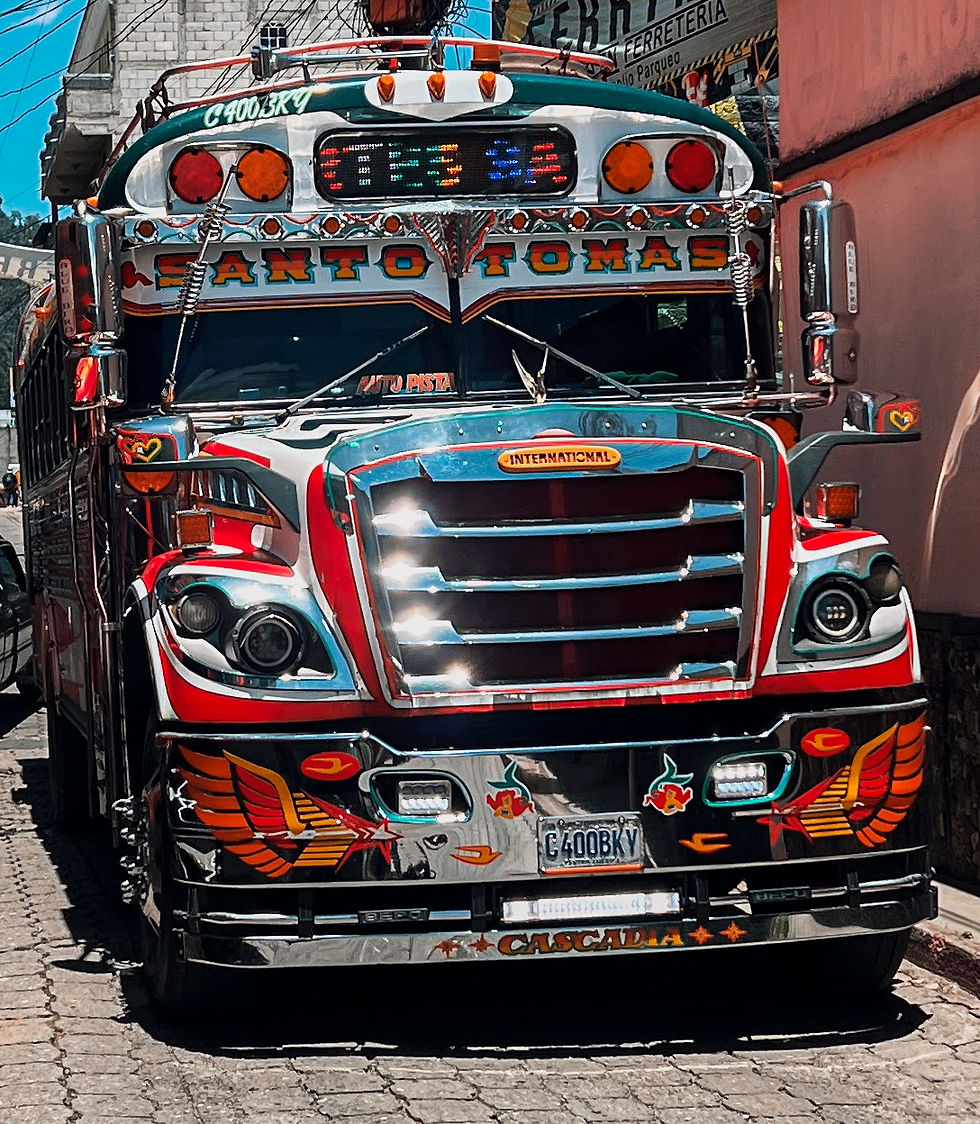
Navigating Guatemala's transit network can be a wild ride, but it's surprisingly accessible—even with kids in tow. This public transit guide covers Antigua and Lake Atitlan as well.
Special Considerations for Parents
Strollers: Not feasible on chicken buses or in crowded shuttles. Antigua’s cobblestones are stroller-unfriendly—opt for baby-wearing.
Baby Wearing: Wear very supportive shoes or hiking boots. Flip-flops could spell disaster unless you're as sure-footed as a mountain goat. Many sidewalks are narrow or uneven.
Car Seats: Rarely used or available in taxis and shuttles. If bringing your own, make sure it has a seat belt attachment.
Rest Stops: Long-distance shuttles often include bathroom/snack breaks—but always bring supplies for on-the-road feeding and changing emergencies.
Guatemalan Public Transit Overview
Mode | What It Covers | Key Notes |
Chicken Buses (WS&T Fave) | All over Guatemala, including major highways | Colorful, cheap, but chaotic. Former US school buses repurposed for local use. Not ideal with kids or large luggage. |
Shuttles (Tourist Vans) | Between major tourist hubs (e.g., Guatemala City, Antigua, Lake Atitlán) | Safer and more comfortable than chicken buses. Can be booked ahead. |
Public Buses (Rutas Cortas) | Within and between local towns | Inexpensive but inconsistent schedules. Rarely marked. Spanish helpful. |
Uber / InDriver | Major cities, including Guatemala City | Affordable. InDriver allows fare negotiation. Not always available outside cities. |
Taxis | Cities and airports | Can be expensive for tourists. Always negotiate price or insist on meter. |
Tuk-tuks | Short distances in smaller towns | Quick and cheap. Great for short hops in places like Antigua or Panajachel. |
Ticket Types & Prices
Ticket Type | Cost Range | Notes |
Chicken Bus Fare | Q5–Q30 (~$0.65–$4) | Pay in cash onboard. Hold onto small bills. |
Shuttle (Guatemala City to Antigua) | Q90–Q150 (~$12–$20) | Most include hotel pickup. Best to reserve in advance. |
Uber/InDriver (within Guatemala City) | Q20–Q60 (~$2.50–$8) | Prices vary by distance and time of day. |
Tuk-tuk Rides | Q5–Q20 (~$0.65–$2.50) | No meter. Always ask price before boarding. |
How to Buy Tickets
Chicken Buses: Pay the fare collector (cobrador) in cash onboard.
Shuttles: Book in advance through:
Travel agencies (in Antigua, Lake Atitlán, etc.)
Hotel reception desks
Online sites like GuateGo: https://www.guatemalatransport.com
Uber: Android | Apple
InDriver: Android | Apple
Ticket Activation & Usage
No activation necessary for any transit type.
For shuttles, show your confirmation email or receipt to the driver.
Always confirm destination and cost before boarding a tuk-tuk or chicken bus.
Useful Maps & Apps
Maps.me: Great for offline routing (especially outside city areas). Android | Apple
Rome2Rio: Good for long-distance planning. https://www.rome2rio.com
Travel Like a Local
Most locals travel early in the day to avoid afternoon rains and traffic.
Don’t expect timetables—"approximate" is the norm.
Guatemalan Spanish is generally clear and friendly—learning key transit phrases can go a long way.
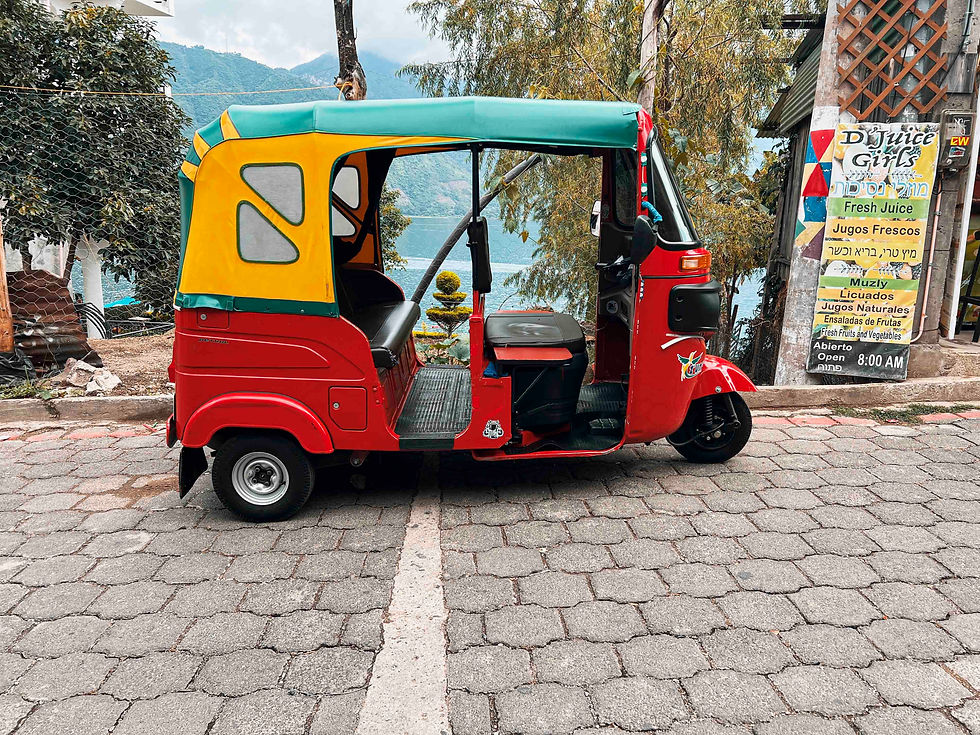
WS&T Family Tip: Booking a shared shuttle with confirmed pickup/drop-off is the easiest and most comfortable way to go from Guatemala City to Antigua with children. Avoid peak arrival times at La Aurora Airport (noon–4pm) to reduce wait time for transfers.
Send pics of your favorite chicken bus!
While subject to change due to construction, schedule and route issues, we do our best to keep the Guatemala (including Antigua and Lake Atitlan) transit guide (with kids) up to date.
Let us know if you see something that needs revision, or notice any glaring issues with our memory of the system.
Our Favorite Gear for Guatemala? Check out curated picks to make life easier when traveling with children.
Visit PACKING For More Outstanding Travel Essentials
Kraków, Poland Public Transit Guide

Kraków is one of Europe’s most rewarding walking cities, but that doesn’t mean you won’t want wheels.
With stroller-friendly trams, phone ticketing, and a few savvy local habits, it’s fairly easy to master—even with kids in tow.
Special Considerations for Parents
Stroller Access: Low-floor trams are common; rear tram door usually designated for strollers
Baby Wearing: Smart for rush hour or crowded Old Town streets
Car Seats: Taxis and ride-hails rarely carry them—bring your own or plan accordingly. Make sure your car seat can be secured with a seat belt
Accessibility: Many stops lack elevators; tram stops are generally well-paved but older stations may require lifting
What’s What in Kraków Transit
Mode | What It Covers | Key Notes |
Trams | City-wide + scenic routes | Best for speed, comfort, and stroller access |
Buses | Suburbs, less-central neighborhoods | Great for zoo or airport connections |
Night Buses | Entire city overnight | Use for airport or late arrivals |
Ride-Hailing | Bolt, Uber, FreeNow | Cheaper than taxis, widespread, fast |
Taxis | Official cars: white with city logo | Avoid unlicensed or hailing on the street |
Ticket Types & Prices (2025)
Ticket Type | Duration | PLN | Approx. USD | Notes |
Short-Term | 20 min | 4.00 | ~$1.00 | Valid on one vehicle for short rides |
Standard | 60 min | 6.00 | ~$1.50 | Transfers allowed within time |
Day Pass | 24 hrs | 17.00 | ~$4.25 | Unlimited travel; cost-effective for full days |
3-Day Pass | 72 hrs | 50.00 | ~$12.50 | Ideal for Flash Trips |
Weekend Family Pass | Sat-Sun | 24.00 | ~$6.00 | Covers 2 adults + kids under 16 |
Where to Buy Tickets
Ticket machines: Found at most tram/bus stops (accept cards, coins; English available)
Kiosks: Look for "Ruch" or "Kasa" newsstands
Mobile Apps:
How to Activate Tickets
Paper tickets: Must be validated in the yellow box inside the tram or bus (insert + stamp)
App tickets: Must be activated before boarding (time-stamped in-app)
Don’t skip validation: Kraków uses an honor system, but random checks are strict.
Transit Maps & Helpful Links
Google Maps Transit Layer (fully functional in Kraków)
Travel Like a Local
Use trams between Kazimierz and Wawel Hill—they’re scenic and quick
Locals don’t tap tickets—they validate once, then relax. So should you
Avoid peak school hours (7–9 AM, 2–5 PM) with a stroller
Getting to and from Kraków Airport (KRK)
Method | Price (PLN/USD) | Time | Notes |
Train (SKA1) | 17.00 PLN / ~$4.25 | ~20 min | Direct train to main station (Kraków Główny); stroller-friendly. |
Bus (#208, #252) | 6.00 PLN / ~$1.50 | ~30–40 min | Frequent departures; good budget option. |
Taxi | 90–120 PLN / ~$22–$30 | ~25–35 min | Official taxis available curbside; avoid third-party touts. |
Ride-Hailing | 50–90 PLN / ~$12–$22 | ~25–35 min | Bolt and Uber operate at KRK. Use app for precise pickup points. |
WS&T Family Tip: Take the 18 tram loop if your kid loves movement but needs a nap. It’s quiet, lightly crowded, and cuts a scenic route between Nowa Huta and Podgórze.
Lisbon Transit Guide: In a word, Beautiful.

Lisbon’s public transport system is one of the most scenic in Europe, winding through steep hills, tiled neighborhoods, and down to the river. It's efficient, affordable, and readily accessible for the fam.
Special Considerations for Parents
Strollers: Metro and newer trams/buses are accessible. Historic trams are not stroller friendly.
Baby Wearing: Helpful in older neighborhoods with cobblestones or staircases.
Car Seats: Not used on transit. Bring one for ride-hailing if needed.
Accessibility: Elevators available in most metro stations; funiculars help avoid steep climbs.
Naturally, if traveling with lots of luggage, consider Uber or Bolt from the airport to your hotel. Rides typically cost €10–€18 (~$10.80–$19.44) to central neighborhoods.
Lisbon Metro Transit Overview
Mode | What It Covers | Key Notes |
Metro (Subway) | 4 lines covering central Lisbon and suburbs | Clean, reliable, and fast. Great for airport and train station transfers. |
Carris Buses | Extensive bus routes across Lisbon | Reliable; useful for hills and neighborhoods not served by metro. |
Historic Trams | Iconic tram lines including Tram 28 | Popular with tourists. Gets crowded; better early or late in the day. |
Elevadores & Funiculars | Steep hills and scenic lookouts | Short rides; part of regular fare. Includes Glória, Bica, and Lavra lines. |
Ferries (Transtejo) | Connects Lisbon to suburbs across the river | Scenic and inexpensive. Operates from Cais do Sodré. |
Ride-Hailing | Uber, Bolt, FreeNow | Widely used; often cheaper than taxis. |
Taxis | Citywide service | Metered, but confirm driver uses it. Night/weekend surcharges apply. |
Ticket Types & Prices (as of 2025)
Ticket Type | EUR Price | USD-ish | Notes |
Single Ride (Metro/Bus) | €1.65 | ~$1.78 | Valid for 60 minutes with transfers (except return trips) |
Viva Viagem Card | €0.50 (one-time) | ~$0.54 | Required for loading tickets and zapping credit |
24-Hour Ticket (Zapping) | €6.60 | ~$7.13 | Unlimited metro, tram, bus, funicular travel |
Airport Metro Fare | €1.65 | ~$1.78 | Standard fare with no baggage surcharge |
Children under 4 | Free | Free | Accompanied by an adult |
How to Buy Tickets
Ticket Activation & Usage
Metro/Bus/Tram: Tap your Viva Viagem card on the yellow reader before boarding or entering.
Funiculars and Elevators: Covered by metro/bus/tram fare; tap card before entering.
Ferries: Tap at ferry terminal gates.
Always keep the card handy—inspectors do random checks.
Useful Maps & Apps
Carris Official Site: https://www.carris.pt
Lisbon Metro Map: https://www.metrolisboa.pt
Travel Like a Local
Board Tram 28 early in the morning to avoid crowds.
Use zapping credit on your Viva Viagem for best fare flexibility.
Take Elevador da Glória or Bica for scenic shortcuts up steep hills.
Consider Cais do Sodré ferry for sunset views of the Tagus River.
Getting from Lisbon Airport (LIS) to Popular Neighborhoods
Neighborhood | Transit Options | EUR Price | USD Price (approx.) | Estimated Time |
Baixa / Chiado | Metro Red Line > Green Line | €1.65 | ~$1.78 | ~30 minutes |
Alfama | Metro Red > Green Line > Walk or Tram | €1.65 | ~$1.78 | ~35–40 minutes |
Belém | Metro + Tram 15 or Bus 728 from Cais Sodré | €1.65–€3.00 | ~$1.78–$3.24 | ~45 minutes |
Bairro Alto | Metro Red > Green Line > Walk | €1.65 | ~$1.78 | ~30 minutes |
Parque das Nações | Direct via Metro Red Line | €1.65 | ~$1.78 | ~20 minutes |
WS&T Family Tip: Start your Viva Viagem cards on arrival at the airport metro station—having them ready makes hopping between neighborhoods a breeze.
And hey, if you've suddenly found out you're pregnant in a Lisbon Honest Greens restaurant, I highly recommend one of their tasty smoothies. They're a great distraction while you and your partner stare at each other and try to process your new reality.

A Special Note for Americans: Why You Have to Validate Tickets in Europe (And Why It Feels Weird)
In cities like Rome, Paris, Prague, Vienna, Lisbon, Porto, Berlin, Kraków and many more, public transport relies on a validation system rather than turnstiles or staffed checkpoints. Here's how it works:
You buy a ticket, then you must validate it before or upon boarding by stamping it in a small machine (usually yellow or orange). Same goes for the digital version. There's often a prompt in the official ticketing app that shows you the process. Some cities offer QR codes on the tram, bus, metro you're riding. You can scan it to validate as well.
This starts the timer on time-based passes (like Rome’s 100-minute BIT ticket).
If you don’t validate it and get caught by an inspector (they board randomly), you can be fined—even if you have a valid ticket. And believe me, the fines are typically not cheap.
Why it’s strange for Americans: In the U.S., public transport typically uses gated entrances (like New York’s MTA or D.C.’s Metro) that check fares automatically. Americans aren’t used to the “honor system + random enforcement” approach common across Europe.
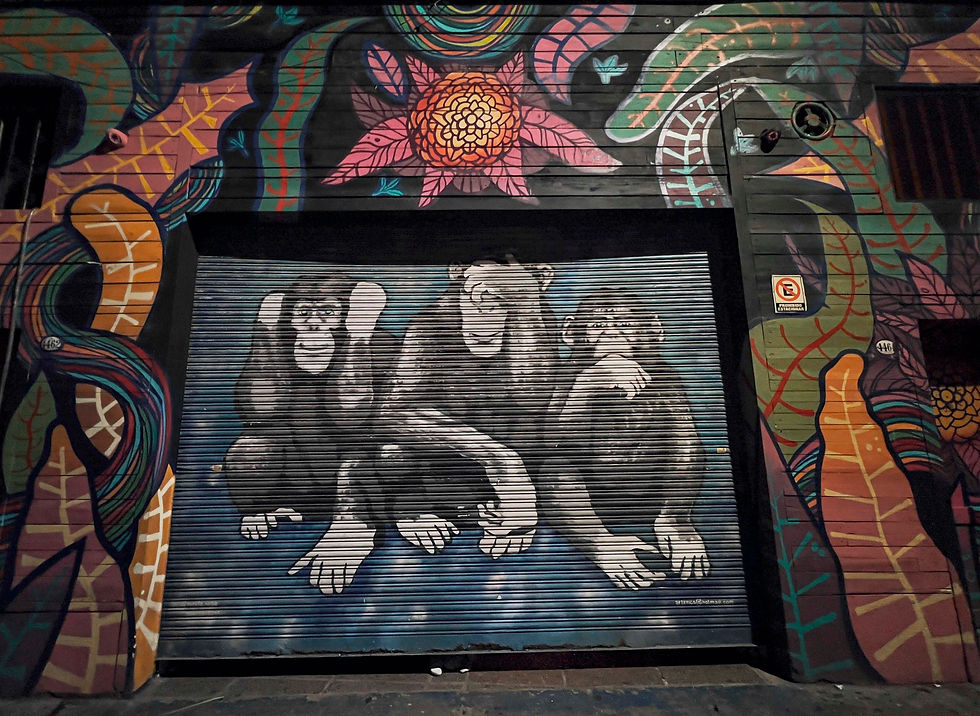
Lastly, when traveling Europe you start to take it for granted that everyone speaks a little English. Cue the record scratch. Ticket inspectors rarely do, so forget about trying to argue, beg for forgiveness, or plead ignorance. They've heard it so often, you may just get summarily booted from the bus.
While subject to change due to construction, schedule and route issues, we do our best to keep the Lisbon metro transit guide (with kids) up to date. Let us know if you see something that needs revision, or notice any glaring issues with our memory of the system.
Our Favorite Gear for Portugal? Check out curated picks to make life easier when traveling with children.
Visit PACKING For More Outstanding Travel Essentials
Mexico City Transit Guide: Exploring CDMX with Confidence

Mexico City is soooo big, but its public transportation system is impressively efficient and cost-effective once you know how it works. We'll also describe how to get from the airport to some of the more popular neighborhoods.
Special Considerations for Parents
Strollers: Not ideal during rush hours; many stations have stairs, not elevators. Lots of lugging up and down.
Baby Wearing: Strongly advised in crowded metro or buses.
Car Seats: Rare in taxis and Ubers; bring your own if needed. Uber doesn’t offer car seat service. Make sure your car seat can be secured using a seat belt.
Parks & Pedestrian Zones: Mexico City has many stroller-friendly green spaces like Bosque de Chapultepec and Parque Mexico. You can use these to navigate huge distances, which is an absolute blast.
Metro Hack: The front cars are typically reserved for women and children.
Mexico City Transit Overview
Mode | What It Covers | Key Notes |
Metro (Subway) | 12 lines across CDMX and some suburbs | Very cheap and extensive. Can get very crowded during rush hour. |
Metrobús | Major arterial routes on dedicated bus lanes | Fast, frequent, and easy to board. Often more comfortable than the metro. |
RTP Buses | Regular city buses | Slower, but good for routes not served by Metro or Metrobús. |
Trolebuses | Electric trolley buses | Eco-friendly. Operates on select major routes. |
Microbuses/Combis | Local van-style transport | Inexpensive but often chaotic and hard to navigate for non-Spanish speakers. |
Cablebús | Gondola system in hilly northern neighborhoods | Good for scenic views and connecting to underserved communities. |
Uber / DiDi / Beat | App-based ride-hailing in urban areas | Affordable by U.S. standards. Safer than hailing taxis on the street. |
Taxis (Sitio or Radio) | Street taxis and authorized stands | Use only official Sitio taxis or radio-dispatched ones. Avoid flagging random cabs. |
Ticket Types & Prices (as of 2025)
Ticket Type | Cost | Notes |
Metro Single Ride | MXN $5 (~$0.30 USD) | Paper ticket or prepaid card. One transfer included. |
Metrobús Single Ride | MXN $6 | Uses same prepaid card as Metro. |
Multi-modal Card | MXN $15 (one-time) | Rechargeable; works on Metro, Metrobús, RTP, etc. |
Children Under 5 | Free | Must be accompanied by an adult. |
How to Buy Tickets
Ticket Activation & Usage
Metro & Metrobús: Tap your mobility card at turnstiles. One fare per entry.
Trolley/RTP/Microbuses: Pay cash upon boarding. Bring small bills or coins.
Ride-Hailing: App-based activation. Pay via card or cash (DiDi/Beat options).
Useful Maps & Apps
CDMX Metro Map: https://www.metro.cdmx.gob.mx/
Mexico City Mobility App: Android | Apple
Moovit: Android | Apple
Travel Like a Local
Use Metro for speed, but Metrobús for comfort.
Avoid transit during rush hours (7:00–9:30 a.m. and 5:00–7:30 p.m.).
On the Metro, the front cars are often reserved for women and children.
Always carry small change and keep your belongings close.
Getting from Mexico City Airport (AICM) to Popular Neighborhoods
Destination Neighborhood | Transit Options | Estimated Cost & Time |
Centro Historico | Metro Line 5 to Line 1 | ~MXN $5, 45 min (not ideal with luggage) |
Roma / Condesa | Uber / DiDi | ~MXN $200–250, 20–40 min depending on traffic |
Polanco | Metro Line 5 > Line 7 | ~MXN $5, 50–60 min |
Coyoacán | Uber / DiDi | ~MXN $250–300, 40–60 min |
Zona Rosa | Metro Line 5 > Line 1 | ~MXN $5, 40 min |
Tip: For comfort and ease, especially with kids or luggage, Uber or DiDi is the best choice out of the airport. Official airport taxis are also available at fixed rates from inside the terminal. Always pre-negotiate unless you're using an app with a declared rate.

WS&T Family Tip: If you’re traveling with children, consider using ride-hailing for airport transfers and relying on Metro or Metrobús once settled. Chapultepec Park is an excellent base for families—it's close to major transit lines and full of family-friendly attractions.
Never fail to stop for freshly pressed tacos on blue corn tortillas and weird street art. I think it's law.
While subject to change due to construction, schedule and route issues, we do our best to keep the Mexico City transit guide (with kids) up to date. Let us know if you see something that needs revision, or notice any glaring issues with our memory of the system.
Our Favorite Gear for Mexico? Check out curated picks to make life easier when traveling with children.
Visit PACKING For More Outstanding Travel Essentials
New York City Metro Area Transit Guide

It's not hard to remember those initial challenges of navigating NYC Metro before living and commuting there for several years, but for newcomers it can be daunting. Hopefully, with a few clear tips, you’ll soon feel like a local—especially if you're visiting with small children.
Special Considerations for Parents
Strollers: Allowed on buses and subway but may need folding during peak hours.
Baby Wearing: Recommended for ease of movement and navigating stairs (elevators/escalators limited in stations).
Car Seats: Generally unnecessary for subway, buses, and ferries; required for taxis and ride-hailing. Make sure your car seat can be secured with a seat belt when traveling without a base (car frame) attachment.
Accessibility: Not all subway stations have elevators. Plan to use the MTA accessibility map or get ready to lug up and down lots of stairs: new.mta.info/accessibility
New York Public Transit Overview
Mode | What It Covers | Key Notes |
Subway (MTA) | Extensive underground network covering NYC boroughs | Runs 24/7, but frequency varies greatly by time |
Buses (MTA) | City-wide coverage including less accessible areas | Good for shorter trips and neighborhoods underserved by subway |
Metro-North & LIRR | Connects NYC to suburban areas (Westchester, Long Island, Connecticut) | Ideal for day trips out of the city |
PATH Train | Links Manhattan to New Jersey cities (Hoboken, Jersey City) | Separate fare from MTA |
Ferries | Connects Manhattan to Staten Island, Brooklyn, Queens, and New Jersey | Scenic, reliable, but separate fare required (except Staten Island Ferry—free) |
Ride-Hailing | Uber, Lyft, and local taxi services | Convenient but pricier option, particularly in peak hours |
Ticket Types & Prices (as of 2025)
Ticket Type | Cost | Notes |
Single Ride | $2.90 | Pay-per-ride with MetroCard or OMNY |
OMNY Tap (Contactless) | $2.90 | Tap your card or smartphone; automatically caps fare after 12 rides/week |
7-Day Unlimited Pass | $34 | Unlimited subway and bus rides; great for stays over 3 days |
Metro-North/LIRR | Varies by destination | Purchase online, via app, or station kiosks |
Children Under 44” | Free (accompanied by fare-paying adult) | No ticket required |
How to Buy Tickets
Ticket Activation & Usage (Important)
Subway & Bus:
MetroCard: Swipe at subway turnstile or insert in bus reader upon entry.
OMNY: Tap card or phone at reader; fare deducted automatically.
Metro-North/LIRR:
Tickets must be activated via the MTA eTix App before boarding.
Conductors check tickets onboard.
Useful Maps & Apps
MTA Official Subway & Bus Maps: new.mta.info/maps
Google Maps: Android | Apple
Citymapper: Android | Apple
Transit App: Android | Apple
Travel Like a Local
Consider using buses in areas underserved by the subway.
Use apps like Citymapper or Transit for real-time updates and quicker routes.
Staten Island Ferry is free and offers stunning views of the Statue of Liberty and skyline.

WS&T Family Tip: For families, apps like Citymapper and Transit offer features specifically highlighting stroller-friendly routes and accessible stations.
While subject to change due to construction, schedule and route issues, we do our best to keep the New York metro (and regional) transit guide (with kids) up to date. Let us know if you see something that needs revision, or notice any glaring issues with our memory of the system.
Our Favorite Gear for New York? Check out curated picks to make life easier when traveling with children.
Visit PACKING For More Outstanding Travel Essentials
Porto Transit Guide: Navigating Portugal’s Northern Must-See
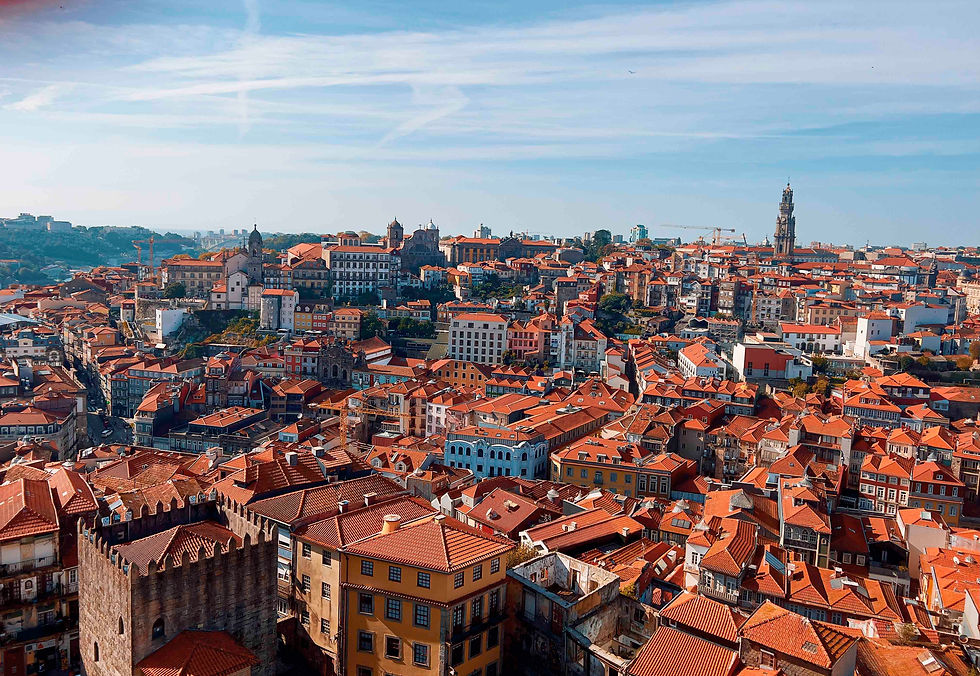
Porto is compact, busy, very hilly, and so seductive—perfect for walky types who don’t mind a few steep climbs. The city features reliable public transit and simple intercity options from Lisbon. We've got the maps and apps, rates and routes to make navigation easier for first-time visitors.
WS&T Travel Tip: Trains leave frequently from Lisbon's Santa Apolónia or Oriente stations and arrive in Porto at Campanhã Station (3ish hours). Use local transit to transfer to São Bento in the city center.
Special Considerations for Parents
Strollers: Most metro stations have elevators, though some hilltop areas require stair navigation. It's kind of intense with a stroller, to be honest.
Baby Wearing: Great for walking around historic, cobbled areas like Ribeira. Use those handrails on wild and wooly stairs.
Car Seats: Not required in public transit. For taxis/Ubers, bring your own if needed. Make sure your car seat can be secured by seat belt.
Accessibility: Metro is fully accessible; buses vary.
Porto Transit Overview
Mode | What It Covers | Key Notes |
Metro do Porto | 6 lines (A–F) connecting the city and suburbs | Light rail-style metro; clean, safe, and reliable. |
STCP Buses | Local and regional bus service | Extensive coverage, especially in areas without metro stops. |
Trams | Historic tram lines in tourist areas | Fun and scenic, but not practical for daily transport. |
Funicular dos Guindais | Connects Ribeira (riverfront) to Batalha (uptown) | Short but steep ride. Great views. |
Taxis / Ride-hailing | Uber, Bolt, FreeNow | Widely available, often cheaper than taxis. |
Regional Trains (CP) | Connects Porto to nearby towns (e.g., Braga) | Inexpensive and scenic for day trips. |
Ticket Types & Prices (as of 2025)
Ticket Type | EUR Price | USD Price | Notes |
Single Metro Ride | €1.60–€2.15 | $1.73–$2.32 | Based on travel zone (Z2–Z4) with Andante card |
Andante 24 (24-hr pass) | €4.15–€7.00 | $4.49–$7.56 | Unlimited rides in designated zones |
Onboard Bus Ticket | ~€2.50 | ~$2.70 | More expensive than pre-purchased tickets |
Taxi (within city) | €5–€15 | ~$5.40–$16.20 | Depends on time, distance, and luggage |
Children under 4 | Free | Free | Must be with a paying adult |
How to Buy Tickets
Ticket Activation & Usage
Andante Card: Must be validated by tapping on a yellow reader before each journey.
Metro: Validate before entering platforms.
Bus: Validate upon boarding.
Funicular and Trams: Usually handled via separate ticketing.
Useful Maps & Apps
Metro do Porto Map: https://www.metrodoporto.pt
Andante Ticket Info: https://www.linhandante.com
Moovit: Android | Apple
Travel Like a Local
The Andante Tour card offers 1–3 days of unlimited travel for tourists.
For scenic views, take Tram 1 along the river.
The Funicular is a fun (I'm so sorry) shortcut to avoid a tough climb from the river to the upper town.
Avoid driving in central Porto—streets are narrow and parking is difficult.
Getting to Porto from Lisbon
Mode | Duration | EUR Price | USD Price (approx.) | Notes |
Alfa Pendular Train | ~2 hr 50 min | €30–€45 | $32.40–$48.60 | High-speed, comfortable, with Wi-Fi and food options. |
Intercidades Train | ~3 hr 15 min | €25–€35 | $27.00–$37.80 | Slightly slower but still reliable. |
FlixBus / Rede Expressos | ~3.5–4.5 hr | €5–€20 | $5.40–$21.60 | Budget-friendly, good for spontaneous plans. |
Flight | ~1 hour (+ airport time) | €40–€90 | $43.20–$97.20 | Not usually worth it given train convenience and time savings. |
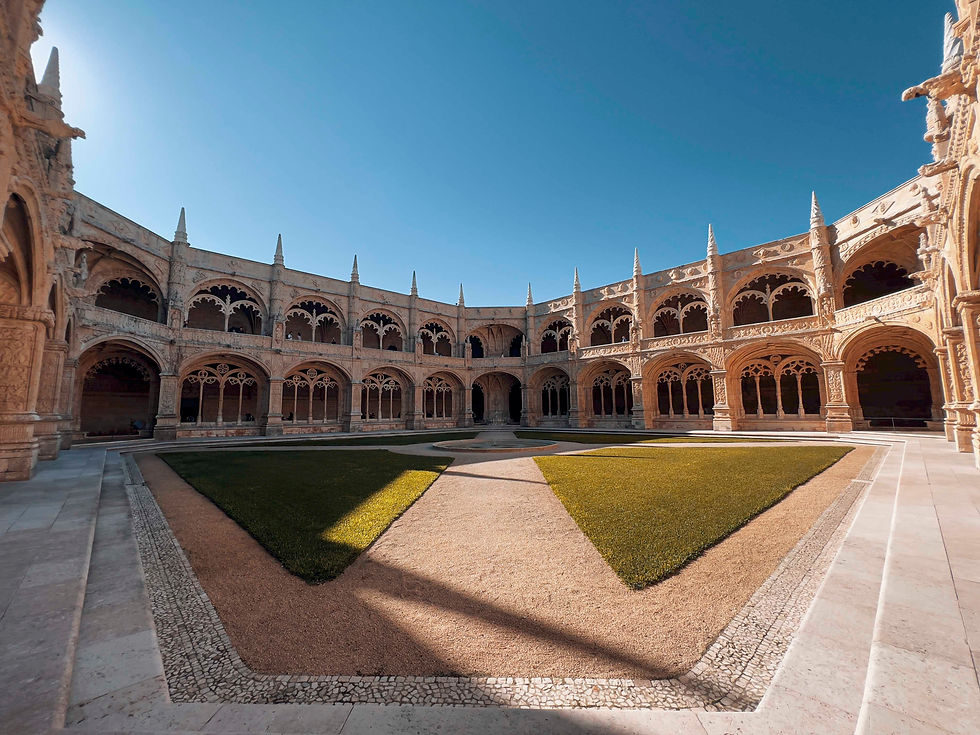
WS&T Family Tip: Porto is a lovely city for families, especially if you stay reasonably near a metro line. Combine the funicular, tram, and riverside strolls. Pre-loading your Andante cards at the start of your trip can help reduce delays when juggling gear or tiny trekkists.
While subject to change due to construction, schedule and route issues, we do our best to keep the Porto transit guide (with kids) up to date. Let us know if you see something that needs revision, or notice any glaring issues with our memory of the system.
For most Americans, the hang-up in using foreign transit systems starts with the language barrier and continues with ticket validation. Nobody likes looking like a fool or jamming up the morning rush hour while local commuters glare.
The urge in some cities is to resist. "I'll just walk." But those mass transit systems are a life-saver. The sooner you learn how the system works, the more confident you'll feel going a bit farther than two legs can readily carry you. True, it's fun to see how high you can run up that step counter, but those aching calves and hips may need a reprieve.
Don't worry, you're not sacrificing the view AND you're not cheating your cardiovascular health. In the words of the Taco Bell girl and my personal guiding star when asked to choose between a this-or-that: "¿Porque no los dos?"
Our Favorite Gear for Porto? Check out curated picks to make life easier when traveling with children.
Visit PACKING For More Outstanding Travel Essentials
Prague Public Transit Overview
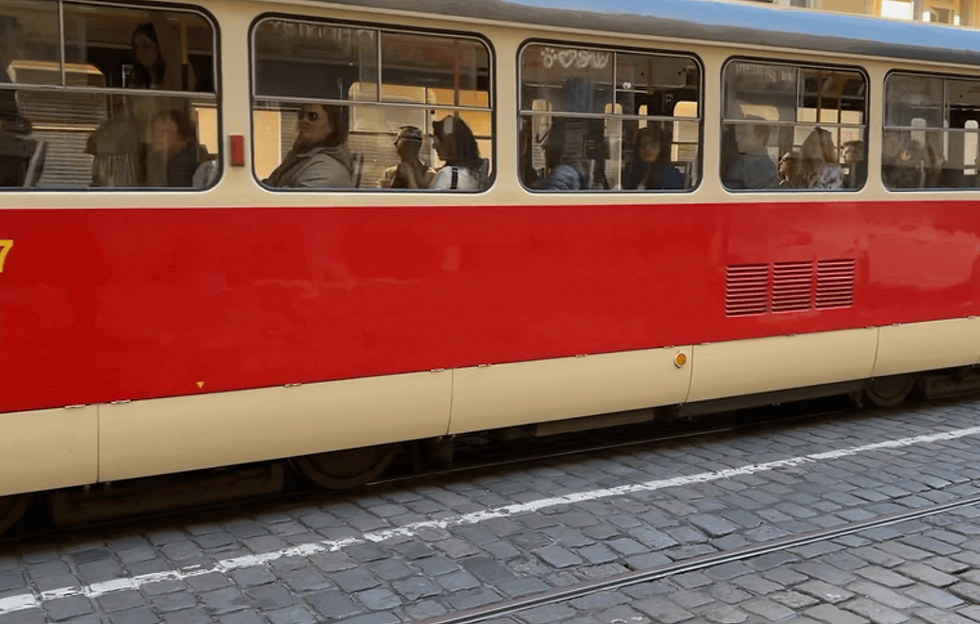
For most Americans, the hang-up in using foreign transit systems starts with the language barrier and continues with ticket validation. Nobody likes looking like a fool or jamming up the morning rush hour while local commuters glare.
The urge in some cities is to resist. "I'll just walk." But those mass transit systems are a life-saver. The sooner you learn how the system works, the more confident you'll feel going a bit farther than two legs can readily carry you. True, it's fun to see how high you can run up that step counter, but those aching calves and hips may need a reprieve.
Don't worry, you're not sacrificing the view AND you're not cheating your cardiovascular health. In the words of the Taco Bell girl and my personal guiding star when asked to choose between a this-or-that: "¿Porque no los dos?"
Service Hours & Frequency
Metro: 5:00 AM–midnight (every 2–10 minutes)
Trams: 24/7 (night trams run less frequently)
Buses: 5:00 AM–midnight, with night routes available
Mode | What It Covers | Key Notes |
Metro (Subway) | 3 lines (A–green, B–yellow, C–red) connecting most of the city | Clean, fast, runs ~5:00 AM to midnight |
Trams | City-wide network, great for sightseeing and locals alike | Tram 22 is especially scenic |
Buses | Outer neighborhoods, airport, night routes | Less common for tourists, but reliable |
Funicular | Connects Újezd to Petřín Hill | Ticketed like any other transit |
Airport Express (AE) | Direct bus to/from main train station (Hlavní nádraží) | Not covered by regular ticket; special fare required |
Ticket Types & Prices (as of 2025)
Ticket Type | Duration | Adult Price | Notes |
Short Ride | 30 minutes | 30 CZK (~$1.30) | Great for quick metro or tram hops |
Standard Ride | 90 minutes | 40 CZK (~$1.75) | Covers most journeys across the city |
1-Day Pass | 24 hours | 120 CZK (~$5.25) | Unlimited rides for a full day |
3-Day Pass | 72 hours | 330 CZK (~$14.50) | Best for Flash Trip travelers |
Children (6–15) | Half price | Under 6 ride free |
How to Buy Tickets
Ticket Machines: Found in metro stations and major tram stops. You can identify them on your preferred map/gps app. Accept coins and cards.
Tabák Shops: Convenience kiosks that sell tickets.
Mobile App: Download PID Lítačka – easiest for buying and managing digital tickets.
Onboard: Some newer trams/buses have contactless card readers for quick ticket purchase. You can easily spot the new ones. They're not nearly as nostalgic, but they faannncy.
How to Activate a Ticket (This Part Matters!)
Paper Ticket? You MUST validate it before riding:
Look for a yellow stamping machine at:
Metro entrances (before descending)
Inside trams and buses (near doors)
Insert your ticket into the machine until you hear a stamp.This prints a timestamp on your ticket and starts the timer.
If you skip this step and get checked by a transit inspector, you can be fined—even if you have a valid but unstamped ticket.
Mobile Ticket? Activation is built-in:
In the PID Lítačka app, purchase AND activate your ticket before boarding.
Show the live ticket screen if requested. Which is to say, keep your mobile app handy. Inspectors move quickly and often don't speak English.
Other Useful Things Like Route Maps & Such!
Where to Find a Prague Transit Map
Official Prague Integrated Transport (PID) Website
Includes metro, tram, and bus maps, printable PDFs, and timetables.
Look for the "Maps" section under "Transport Around Prague."
Interactive Map of Prague Transit
Live, zoomable map showing metro, tram, and bus lines with stop info.
Also shows real-time departures for trams and buses.
Metro Map Only (Simple Visual)
https://www.metro.mapapraha.com/
Clean, downloadable map of just the 3 metro lines.
Google Maps
Accurate transit overlays and directions in real time.
Shows tram stops, walking routes, and even platform info for metros.
A Special Note for Americans: Why You Have to Validate Tickets in Europe (And Why It Feels Weird)
In cities like Rome, Paris, Prague, Vienna, Lisbon, Porto, Berlin, Kraków and many more, public transport relies on a validation system rather than turnstiles or staffed checkpoints. Here's how it works:
You buy a ticket, then you must validate it before or upon boarding by stamping it in a small machine (usually yellow or orange). Same goes for the digital version. There's often a prompt in the official ticketing app that shows you the process. Some cities offer QR codes on the tram, bus, metro you're riding. You can scan it to validate as well.
This starts the timer on time-based passes (like Rome’s 100-minute BIT ticket).
If you don’t validate it and get caught by an inspector (they board randomly), you can be fined—even if you have a valid ticket. And believe me, the fines are typically not cheap.
Why it’s strange for Americans: In the U.S., public transport typically uses gated entrances (like New York’s MTA or D.C.’s Metro) that check fares automatically. Americans aren’t used to the “honor system + random enforcement” approach common across Europe.
Lastly, when traveling Europe you start to take it for granted that everyone speaks a little English. Cue the record scratch. Ticket inspectors rarely do, so forget about trying to argue, beg for forgiveness, or plead ignorance. They've heard it so often, you may just get summarily booted from the bus.
Helpful Transit Apps for Prague
App Name | What It Does |
PID Lítačka | Official app for buying tickets, checking routes, schedules, and delays. |
Mapy.cz | Czech-made app with walking, hiking, bike, and transit layers. Great offline use. |
Google Maps | Reliable for route planning and public transit directions. |
IDOS (Jízdní řády) | All-in-one Czech transit planner—covers trains, buses, trams, and long-distance routes. |
Moovit | Global app with real-time transit info, stop notifications, and step-by-step routes. |
Our Favorite Gear for Prague? Check out curated picks to make life easier when traveling with children.
Visit PACKING For More Outstanding Travel Essentials
Rome Transit Guide: Navigating the Eternal City
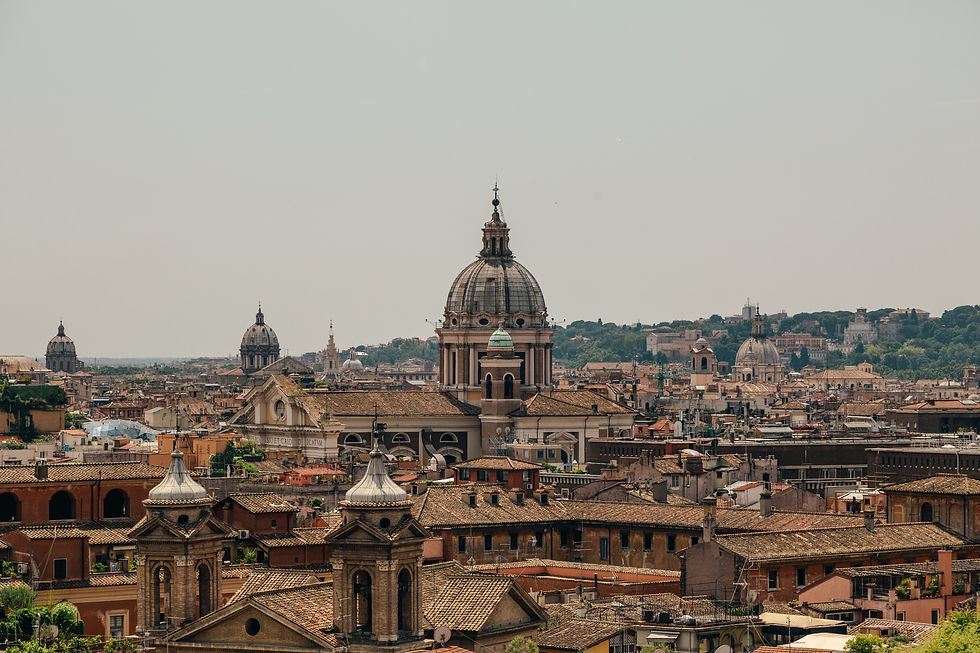
Rome's transit system gets a lot of grief for long lines, overcrowding and schedule issues. Visitors may not bear the brunt of its woes, but bring a healthy dose of patience. This thing is built around a mere two millenia of city infrastructure, so what can one really expect?
Special Considerations for Parents
Strollers: Many metro stations lack elevators; buses are stroller-friendly but crowded.
Baby Wearing: A good option for navigating ancient streets and uneven walkways.
Car Seats: Required in taxis and rental cars; not provided by default. Be sure your car seat can be secured with a seat belt.
Free Transit: Kids under 10 ride free with adult. Heck yes!
Public Transit Overview
Mode | What It Covers | Notes |
Metro | 3 lines (A, B, and C) covering major city corridors | Fast and simple, but limited coverage near historic center. |
Buses & Trams | City-wide coverage | Frequent but often delayed due to traffic. Night buses available. |
Regional Trains | Connect suburbs and airports | Useful for day trips and airport transfers. |
Taxis | Available citywide | Use official taxi stands or call to avoid scams. |
Ride-Hailing | Uber, FreeNow, Bolt | UberX is limited; FreeNow and Bolt more common. |
Hop-On Hop-Off Buses | Tourist-oriented routes | Good for overview tours, but not part of public system. |
Ticket Types & Prices (2025)
Ticket Type | EUR Price | USD Price (approx.) | Notes |
BIT (100-min ticket) | €1.50 | ~$1.63 | Valid for buses, metro, trams for 100 minutes from validation |
24-Hour Ticket | €7.00 | ~$7.60 | Unlimited rides on buses, metro, trams for 24 hours |
48-Hour Ticket | €12.50 | ~$13.55 | Unlimited rides for 48 hours |
72-Hour Ticket | €18.00 | ~$19.50 | Best value for weekend visitors |
Weekly Pass (CIS) | €24.00 | ~$26.00 | Unlimited use for 7 consecutive days |
Children under 10 | Free | Free | Must be with a paying adult |
How to Buy Tickets
Ticket Activation & Usage
Paper tickets must be validated using yellow machines on buses/trams or before entering metro turnstiles.
App tickets must be activated before boarding and shown on request.
Getting from Rome Airports to the City
Airport | Transit Options | EUR Price | USD Price (approx.) | Time |
Fiumicino (FCO) | Leonardo Express train to Termini | €14 | ~$15.15 | ~32 minutes |
Bus (Terravision, SIT, etc.) | €6–€7 | ~$6.50–$7.60 | ~45–60 minutes | |
Taxi (fixed fare to city center) | €50 | ~$54.20 | ~40 minutes | |
Ciampino (CIA) | Bus to Termini via Terravision/SIT | €5–€6 | ~$5.40–$6.50 | ~40–60 minutes |
Taxi (fixed fare to city center) | €31 | ~$33.60 | ~30 minutes |
Useful Maps & Apps
Rome Metro Map: https://www.rometoolkit.com/transport/rome_metro_map.htm

Travel Like a Local
Expect occasional transit strikes—check ahead before relying on public transport.
For reliable taxis, call or use the FreeNow app—never hail one off the street at tourist landmarks. Pre-negotiating is all well and good... if they choose to honor the rate.
Metro is clean but not comprehensive; plan on some walking or bus connections.
WS&T Family Tip: Hope you're a family of early risers. That's really the best and least stressful way to get out and about.
While subject to change due to construction, schedule and route issues, we do our best to keep the Rome transit guide (with kids) up to date. Let us know if you see something that needs revision, or notice any glaring issues with our memory of the system.
Our Favorite Gear for Italy? Check out curated picks to make life easier when traveling with children.
Visit PACKING For More Outstanding Travel Essentials



















Comments